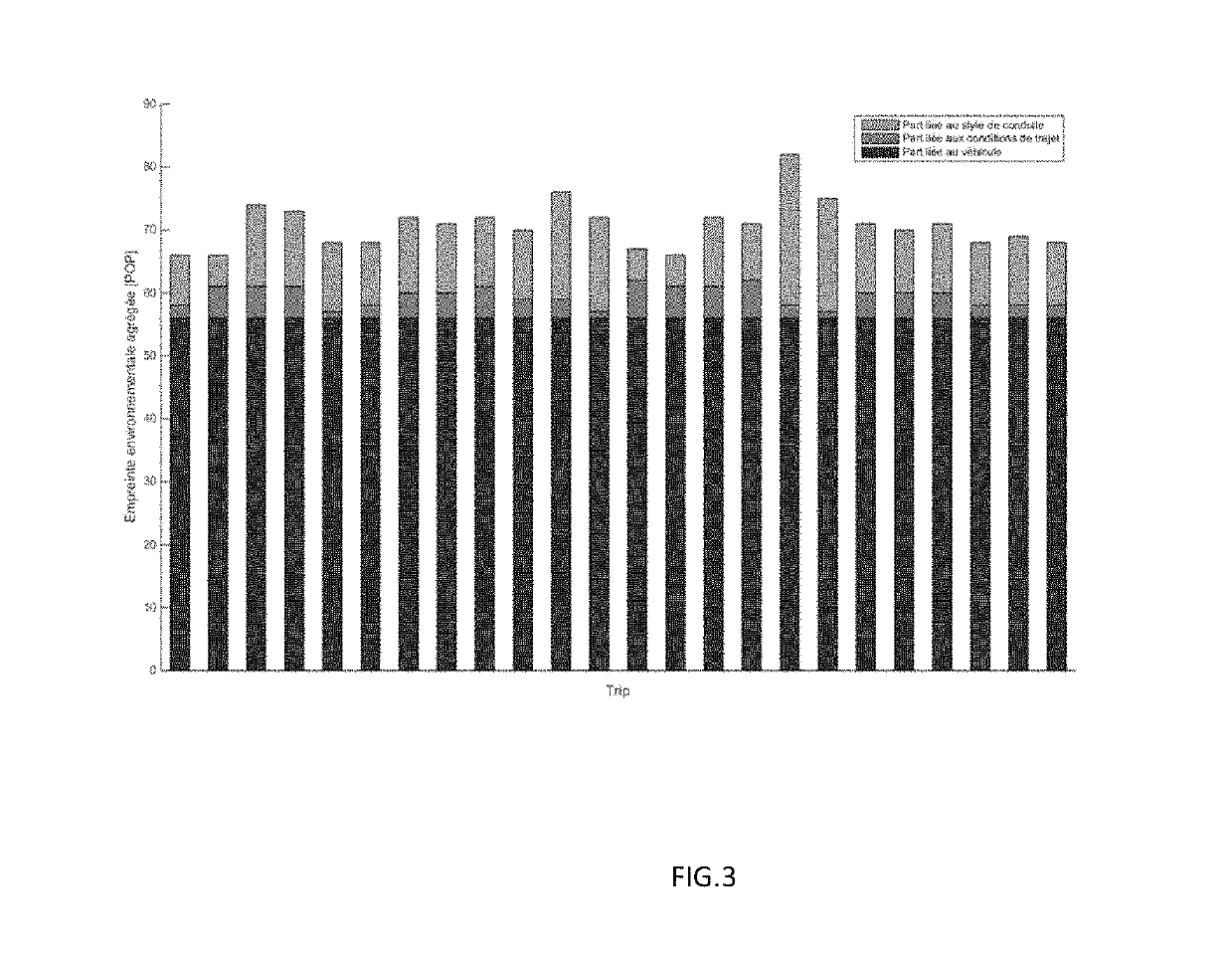Method for determining indicators regarding the polluting nature of mobility taking real usage into account
- Summary
- Abstract
- Description
- Claims
- Application Information
AI Technical Summary
Benefits of technology
Problems solved by technology
Method used
Image
Examples
example 1
[0127]Example 1 below illustrates a real case of breaking down the pollution footprint determined for each motorized vehicle trip as well as the determination of the potential for improvement. By generating a target speed profile representative of an optimal style of driving, the method in accordance with the invention can be used to precisely quantify the potential for improvement linked to the style of driving for a route travelled with a given vehicle. FIG. 2 illustrates a comparison between a generated target speed profile and a real speed profile for the same route (FIG. 2A) and the potential savings in fuel consumption (instantaneous in kg / h FIG. 2B, and cumulative in L / 100 km, FIG. 2D) and oxides of nitrogen emissions (instantaneous in g NOx / h in FIG. 2C, and cumulative emissions in mg NOx / km, FIG. 2E) as a function of time (in s) for a diesel vehicle. It will be observed that it is possible to significantly reduce pollution emissions with minor modifications to the way of dr...
example 2
[0128]Example 2 illustrates the breakdown of factors having an impact on pollution emissions for 24 different users driving the same vehicle over the same route. FIG. 3 represents, in the form of histograms, the aggregated environmental footprint broken down into a portion linked to style of driving, a portion linked to the route conditions and a portion linked to the vehicle, as a function of the driver. This figure illustrates the function of the algorithm which can be used to determine the portion of pollution emissions linked to the style of driving in the overall pollution footprint (aggregated environmental footprint, POP). In fact, for the same route and the same vehicle, it will be observed that the pollution level varies substantially as a function of the driver. However, the difficulty is to estimate, from a single transit, whether there is a potential for improvement to the pollution emissions linked to improving the style of driving. It will be observed that for differen...
PUM
 Login to View More
Login to View More Abstract
Description
Claims
Application Information
 Login to View More
Login to View More - R&D
- Intellectual Property
- Life Sciences
- Materials
- Tech Scout
- Unparalleled Data Quality
- Higher Quality Content
- 60% Fewer Hallucinations
Browse by: Latest US Patents, China's latest patents, Technical Efficacy Thesaurus, Application Domain, Technology Topic, Popular Technical Reports.
© 2025 PatSnap. All rights reserved.Legal|Privacy policy|Modern Slavery Act Transparency Statement|Sitemap|About US| Contact US: help@patsnap.com



